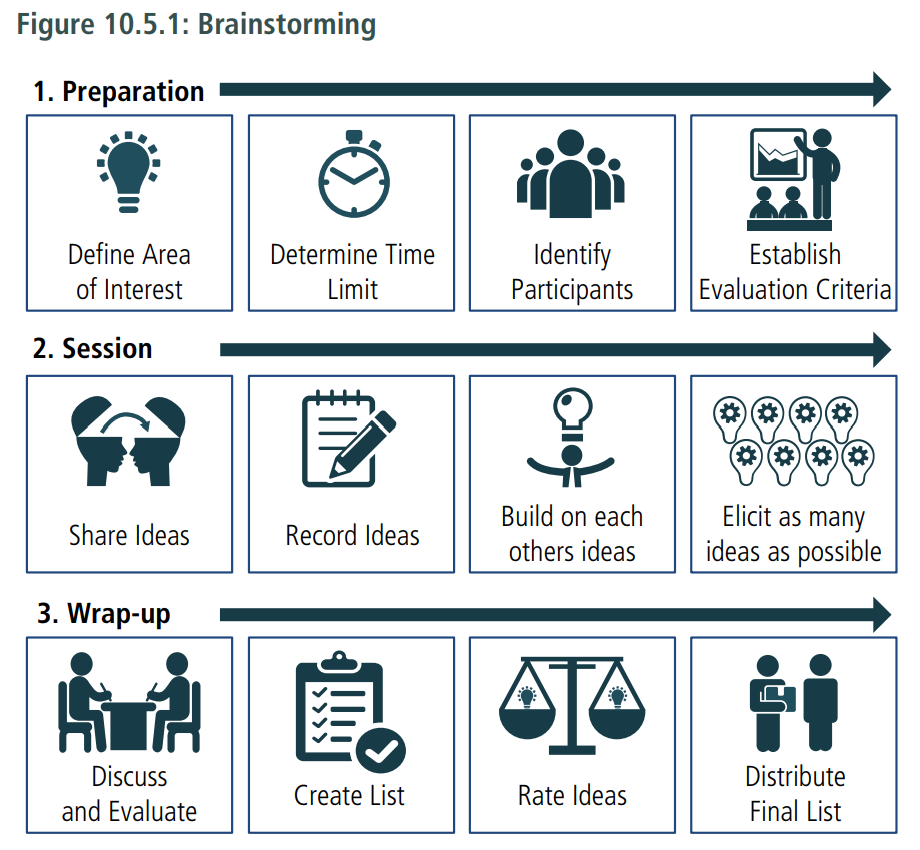10.5.1 Purpose
Brainstorming is an excellent way to foster creative thinking about a problem. The aim of brainstorming is to produce numerous new ideas, and to derive from them themes for further analysis.
10.5.2 Description
Brainstorming is a technique intended to produce a broad or diverse set of options.
It helps answer specific questions such as (but not limited to):
- What options are available to resolve the issue at hand?
- What factors are constraining the group from moving ahead with an approach or option?
- What could be causing a delay in activity ‘A’?
- What can the group do to solve problem ‘B’?
Brainstorming works by focusing on a topic or problem and then coming up with many possible solutions to it. This technique is best applied in a group as it draws on the experience and creativity of all members of the group. In the absence of a group, one could brainstorm on one’s own to spark new ideas. To heighten creativity, participants are encouraged to use new ways of looking at things and freely associate in any direction. When facilitated properly, brainstorming can be fun, engaging, and productive.

10.5.3 Elements
.1 Preparation
- Develop a clear and concise definition of the area of interest.
- Determine a time limit for the group to generate ideas; the larger the group, the more time required.
- Identify the facilitator and participants in the session (aim for six to eight participants who represent a range of backgrounds and experience with the topic).
- Set expectations with participants and get their buy-in to the process.
- Establish the criteria for evaluating and rating the ideas.
.2 Session
- Share new ideas without any discussion, criticism, or evaluation.
- Visibly record all ideas.
- Encourage participants to be creative, share exaggerated ideas, and build on the ideas of others.
- Don’t limit the number of ideas as the goal is to elicit as many as possible within the time period.
.3 Wrap-up
- Once the time limit is reached, discuss and evaluate the ideas using the predetermined evaluation criteria.
- Create a condensed list of ideas, combine ideas where appropriate, and eliminate duplicates.
- Rate the ideas, and then distribute the final list of ideas to the appropriate parties.
10.5.4 Usage Considerations
.1 Strengths
- Ability to elicit many ideas in a short time period.
- Non-judgmental environment enables creative thinking.
- Can be useful during a workshop to reduce tension between participants.
.2 Limitations
- Participation is dependent on individual creativity and willingness to participate.
- Organizational and interpersonal politics may limit overall participation.
- Group participants must agree to avoid debating the ideas raised during brainstorming.
